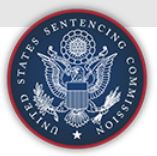|
 An important piece in understanding crime and our criminal justice system is to learn about the related facts and statistics. Sources like TV news, magazines, and newspapers have a story to tell so we get some facts, but not all the relevant information. An important piece in understanding crime and our criminal justice system is to learn about the related facts and statistics. Sources like TV news, magazines, and newspapers have a story to tell so we get some facts, but not all the relevant information.
For instance, did you know that people who have served time for murder are among the least likely to recidivate?? (https://bjs.ojp.gov/BJS_PUB/rpr24s0810yfup0818/Web content/508 compliant PDFs) Fair Shake’s list of facts and statistics are far from the last word; they are here to pique your interest and encourage further research. Together we can assure that our laws, and the representatives that make them, reflect the society we want to be. |
| Everything in this section available Online Only

Recidivism:
http://www.ojp.usdoj.gov/reentry/learn.html
Corrections Statistical Analysis Tool:
This dynamic analysis tool allows you to examine National Prisoner Statistics (NPS) on inmates under the jurisdiction of both federal and state correctional authorities.
You can instantly generate tables of numbers and rates of national and jurisdictional statistics, from 1978 to the most recent year that NPS data are available. The web tool includes state-level prisoner data from the 50 state departments of corrections, the Federal Bureau of Prisons (BOP), and the District of Columbia (until 2001, when sentenced felons from the District became the responsibility of the BOP).
Corrections Statistical Analysis Tool Link
 US Sentencing Commission US Sentencing Commission
www.ussc.gov/research/quick-facts
Quick Facts publications give readers basic facts about a single area of federal crime in an easy-to-read, two-page format.
A brief exploration into types of felonies
Wikipedia on Felonies
http://en.wikipedia.org/wiki/Felony
BJS – Types of crime
https://www.bjs.gov/index.cfm?ty=tp&tid=3
And misdemeanors
Wikipedia information on misdemeanors
http://en.wikipedia.org/wiki/Misdemeanor
Drug Enforcement Administration Schedule of Drugs
US Department of Justice drug scheduling
http://www.usdoj.gov/dea/pubs/scheduling.html
Uniform Crime Reporting
FBI crime statistics for the USA
http://www.fbi.gov/about-us/cjis/ucr/ucr
|
![]() |
|
Drug Schedules
|
SCHEDULE I
Schedule I drugs are those with a high potential for abuse, with an absence of any medical use, that are dangerous to the user even under medical supervision. The more commonly recognized types of these drugs are: heroin, LSD, mescaline, marijuana, and peyote.
SCHEDULE II
Schedule II drugs have a high potential for abuse and a high potential for severe psychological or physical dependency, but are currently accepted for medical use. Schedule II drugs include opium, cocaine, methadone, amphetamines, and methamphetamines.
SCHEDULE III
Schedule III drugs, by comparison have less potential for abuse than Schedule II drugs, a potential for moderate psychological or physical dependency, and an accepted medical use. The most well known Schedule III drug is naline, which is used to detect narcotic use.
SCHEDULE IV
Schedule IV drugs have less potential for abuse than Schedule III drugs, they have a limited potential for dependency, and they are accepted in medical treatment. These drugs include tranquilizers, meprobamate, chloral hydrate, most drugs that cause sleep, and sedatives.
|
|
![]() |